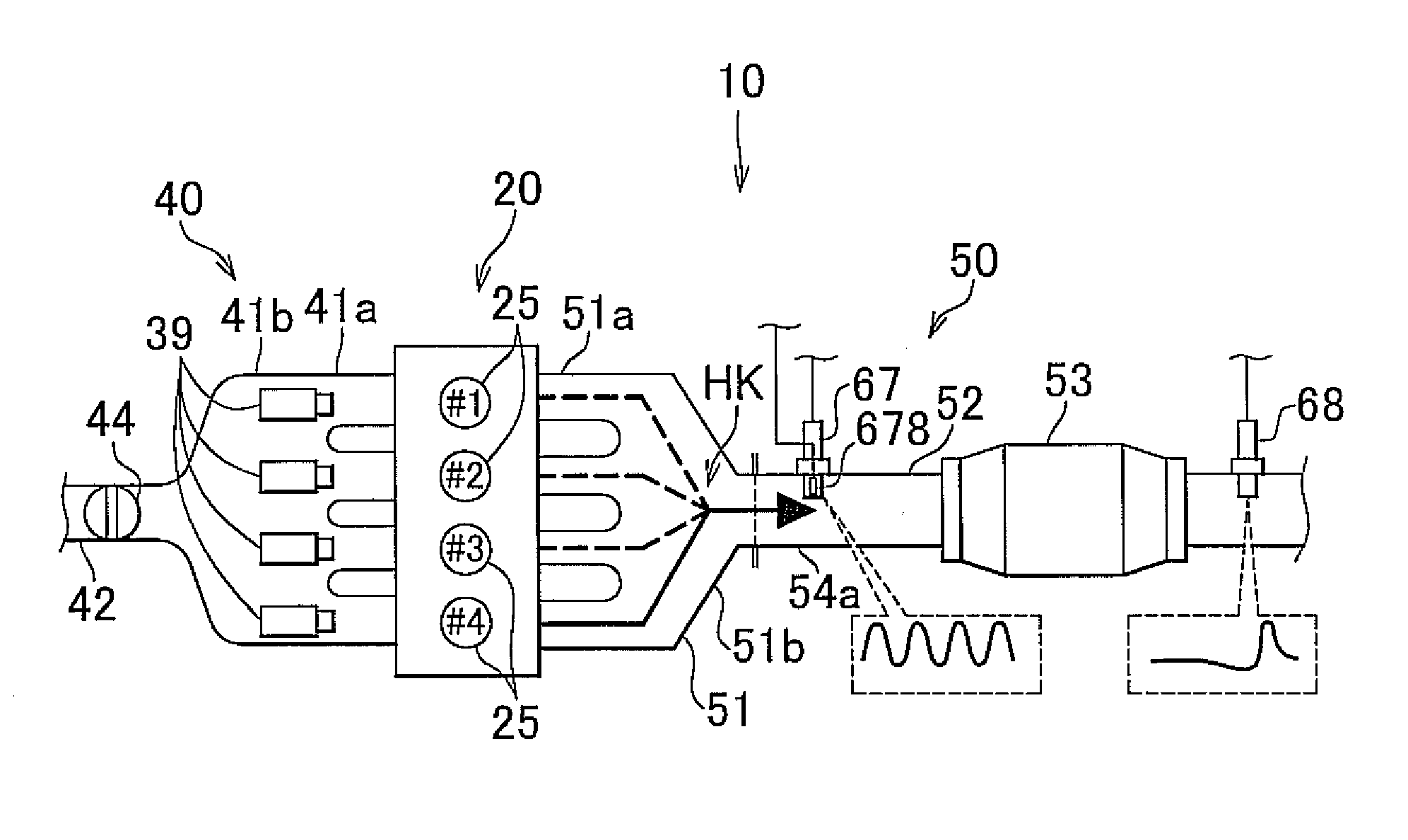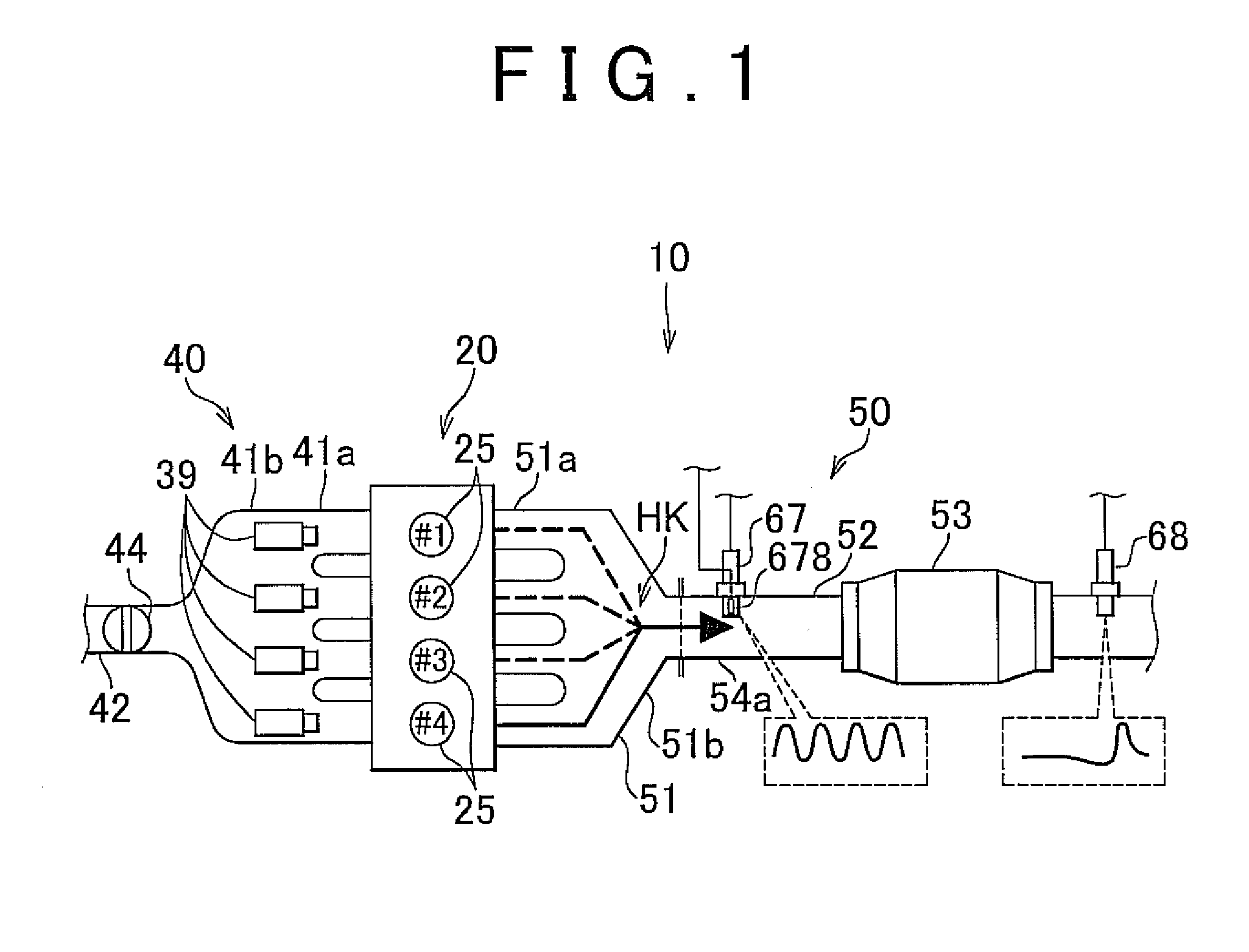Internal combustion engine control device and control method thereof
- Summary
- Abstract
- Description
- Claims
- Application Information
AI Technical Summary
Benefits of technology
Problems solved by technology
Method used
Image
Examples
Embodiment Construction
[0084]A control device for an internal combustion engine according to embodiments of the invention (will be also referred to hereinbelow simply as “control device”) and a control method thereof will be described below with reference to the appended drawings. The control device is an “air-fuel ratio control device” that controls an air-fuel ratio of a gas mixture supplied to an internal combustion engine (air-fuel ratio of engine). This control device is also an “inter-cylinder air-fuel ratio imbalance determination device” that determines whether or not an inter-cylinder air-fuel ratio imbalance has occurred.
[0085]FIG. 7 shows a schematic configuration of a system in which the control device is applied to a four-cycle, spark-ignited, multi-cylinder (in-line four cylinders) internal combustion engine 10. FIG. 7 shows only the cross section of a specific cylinder, but a similar configuration is provided in the other cylinders.
[0086]The internal combustion engine 10 includes a cylinder...
PUM
 Login to View More
Login to View More Abstract
Description
Claims
Application Information
 Login to View More
Login to View More - R&D
- Intellectual Property
- Life Sciences
- Materials
- Tech Scout
- Unparalleled Data Quality
- Higher Quality Content
- 60% Fewer Hallucinations
Browse by: Latest US Patents, China's latest patents, Technical Efficacy Thesaurus, Application Domain, Technology Topic, Popular Technical Reports.
© 2025 PatSnap. All rights reserved.Legal|Privacy policy|Modern Slavery Act Transparency Statement|Sitemap|About US| Contact US: help@patsnap.com



